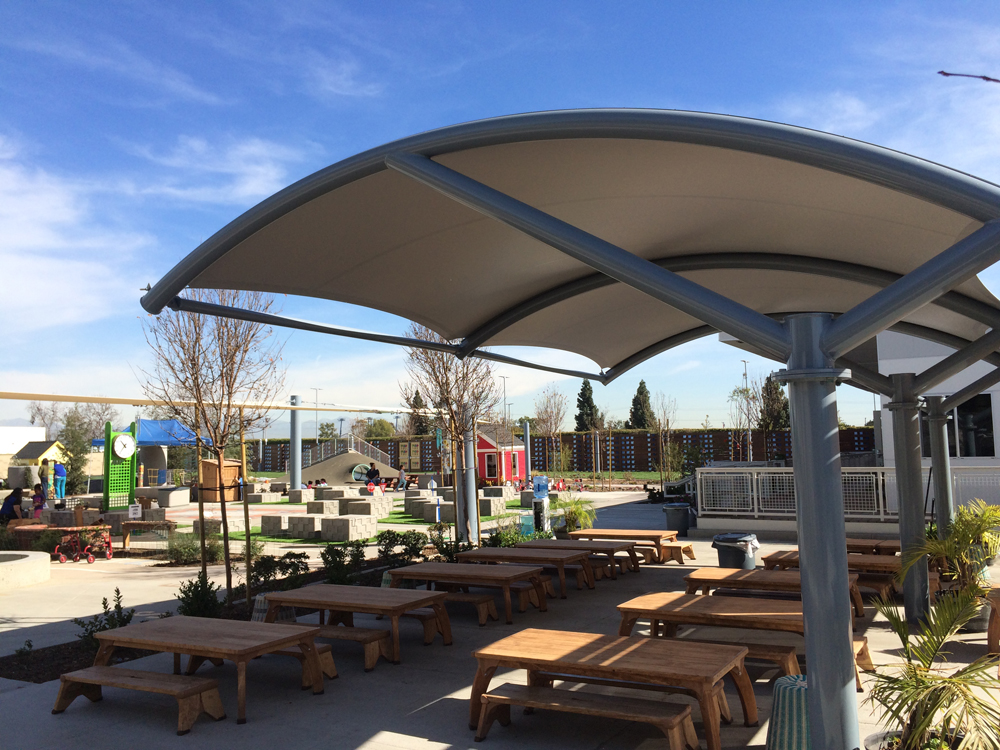 Tensioned membrane structures are widely celebrated for their incredible design versatility and functional benefits. However, one of the lesser-discussed benefits is the relatively small amount of maintenance they require in comparison to a similarly sized conventional building. As you’re considering whether PVC or PTFE fabric is best-suited for your project requirements, your Tension Structures Project Manager will also review the long-term maintenance considerations of each option.
Tensioned membrane structures are widely celebrated for their incredible design versatility and functional benefits. However, one of the lesser-discussed benefits is the relatively small amount of maintenance they require in comparison to a similarly sized conventional building. As you’re considering whether PVC or PTFE fabric is best-suited for your project requirements, your Tension Structures Project Manager will also review the long-term maintenance considerations of each option.
Here’s a simple overview of some of the topics you’ll discuss.
Maintenance Considerations
The maintenance and cleaning considerations vary depending on the type of fabric you choose and the design of the structure. PVC fabric is known for its stellar balance between price and performance, but it is more susceptible to dirt, dust, and pollution. Therefore, it’s important to clear any debris that may get caught in the structure and, if possible, regularly hose down the membrane to rinse away any dirt build-up.
As a Teflon™-coated woven fiberglass membrane, PTFE fabric has significantly better performance when it comes to stain-resistance and reduced maintenance requirements. However, many choose ePTFE with Fluoropolymer Coating for even greater resistance to stains or contamination.
For a membrane that can withstand extreme exhaust pollution and the most dust-filled air without any significant maintenance requirements, TiO2 Coated PTFE Fabric is the most innovative material in the industry. It’s the closest you can get to a self-cleaning membrane.
Cleaning Considerations
Each membrane (with its specific coatings and finishes) has its own procedures for cleaning, but generally speaking, the cleaning process is completed with long handled brushes and soapy water or pressure washers. Depending on the size of the structure, cleaning may simply require a cherry picker or similar lift system, or it may involve specialized riggings and trained personnel. With multi-story tensile facade systems, semi-permanent scaffolding can be developed to simplify access.
PVC and similar quality fabrics benefit from annual cleanings in order to maximize their lifespan, so if a project’s design makes cleaning difficult or impossible, some version of PTFE fabric should be considered as a better-suited choice.
Repair Considerations
While tensioned membrane structures are created with top-quality and high-performance materials, there is still the potential for tears – especially if the membrane comes in contact with a sharp object. Small cuts may be repaired with simple patches, while larger tears may require a specialized repair using equipment such as a portable hot air welder.
If the membrane is at a high risk for vandalism (and the design can’t be adjusted to compensate), it may be a worthwhile precaution to evaluate whether modular panels are a possibility – as replacing smaller panels would minimize costs in comparison to major repairs on large expanses of tensioned fabric.
As a design-build manufacturer, the team at Tension Structures is by your side from the initial designs to final unveiling – helping you make the best choices for your projects unique requirements.
Are PVC or PTFE Fabric Structures Right for Your Next Project?
In the Tension Structures Division of Eide Industries, we specialize in design, engineering, manufacturing, and installation of structurally complex and creatively challenging commercial, government, and prototype design projects. We provide expertise and support for architects, landscape designers, general contractors, and property owners to develop their custom tensile membrane project ideas and construct iconic structures.
Explore the options for your next project. Contact one of our experts today by calling 800-422-6827.
